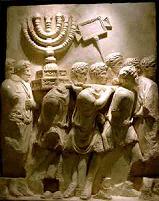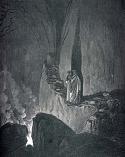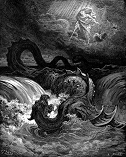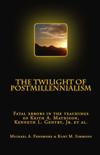Simmons’ Response to Voss
The Unfortunate Eisegesis of
Max King’s Corporate Body View of the Resurrection
Note: “Eisegesis” is from the Greek “to lead in” and means to introduce one’s own ideas into a text as opposed to “exegesis” which draws the intended meaning out from it.
Norman Voss, a wonderful man and good friend, posted our article on I Corinthians 15 from last month’s newsletter on “PlanetPreterist” with the following comments. I thought it might be instructive to casually interact with Norman’s comments here.
Voss: I don’t believe Kurt would deny that there is a collective “Body of Christ” that composes all believers today which was consummated at AD70. What Kurt fails to remember is that the “Body” of believers is a covenant group with origins from God’s original covenant with Adam. That original covenant established as the Old Heavens and Earth of Adam became legally the “body of Death” when Adam broke the first Law/commandment. Christ transformed that corrupted covenantal body of Death into the body of his glory (Phil 3:21). There was then an original “legal” separation when Adam opened his eyes at that “legal” loss of relationship with God and in like manner Paul says the mystery would be the “legal” change that happens again in the twinkling of an eye.
Simmons’ Response: Here we see the “covenantal” heavens and earth model originally advanced by Max King, which is inherently Universalistic. All mankind traces its common descent from Adam. I consider this to be an essential tenant of the Christian faith. All men are heirs of Adam’s fallen nature, and all who attain to an age of accountability suffer juridical death in him; viz., they come under the sentence of eternal death for their individual sins based upon their sin nature inherited from Adam (Rom. 5:12, 19). Since all men are “in Adam,” all men are therefore under Norman’s so-called “Adamic covenant” (we deny there is any legal covenant by which all men suffer imputed Adamic guilt or death. We are condemned for our own sins, or not at all). Norman equates this “Adamic covenant” with the “heavens and earth” created in Genesis one. Norman affirms that the legal and covenantal edifice of this “heavens and earth” passed away at the eschaton. But, if all men were in Adam and therefore in the old “heavens and earth,” it is clear that all men are partakers of the “new heavens and earth,” which, according to Norman and Max King, is the New Covenant. This, of course, results in Universal justification.
There simply is no logical basis for concluding all men under an “Adamic covenant,” but including only some men under the new covenant of the second Adam. If all were under the “first” heavens and earth, then all are in the “new” heavens and earth. Scripture confirms this. Rev. 22:15 plainly places alien sinners in the new heavens and earth, outside of the new Jerusalem. According to the covenantal heavens and earth model, these alien sinners are partakers of the New Testament, for they are in the new heavens and earth. Hence, unless we are prepared to embrace Universalism, we must reject the notion that the heavens and earth (new or old) are “covenantal.” In the words of Tim King, Max’s son: “Simply stated, man is changed because his world changed. Man is reconciled to God because he no longer lives under the rule of sin and death as determined by the Mosaic world. Through the gift of Christ he dwells in a world of righteousness and life. The issue is cosmic and corporate, not individual and limited.” Tim King, Comprehensive Grace, 2005.
Notice that Tim King says all men (“man”) are reconciled to God (Universalism) based upon the world’s (“heavens and earth”) purported change through removal of the Mosaic law. The issue is cosmic and corporate, not individual and limited. If this is not Universalism, what is it? Furthermore, notice that under King’s model man is saved, not by the addition of grace, but by the removal of law. It is the removal of the Mosaic law that redeems and reconciles mankind! A dangerous, cross-diminishing doctrine if ever there was one! Preterists, FLEE MAX KING!
The better view, therefore, is that the “heavens and earth” of the prophets spoke to thrones and dominions and nations and peoples, not the Old Testament or some “Adamic covenant.” The world of old was under the dominion of evil men, who persecuted the righteous. But with the coronation and kingdom of Christ, a new era was ushered in. Jesus rules the nations with an iron rod. The new Jerusalem is the covenantal community; outside its walls are unregenerate men. We live in a new heavens and earth in which Christ reigns over all in righteousness; the church has world dominion by and through him. (See our article “The Symbolism of the Heavens & Earth: National and Political or Covenantal?”)
Voss: Now I do not ascribe that there is a legal opening for those outside the covenant so in a way Kurt and I agree somewhat as this legal status is only for those within the collective “body of Christ”. One must seek and enter into covenant with God and must remain faithful to the end to receive one’s eternal reward. Man is given free moral choice and can remove themselves from this relationship while in the physical realm if they so choose.
Simmons’ Response: There are a couple inconsistencies here. First, Norm alleges believers are somehow already “resurrected” and in receipt of their eternal reward (and faults me because I say they are not), but here clearly states that to receive this reward the believer must be faithful until the end of life. Thus, Norm vacillates between two positions. He affirms present resurrection on the one hand, then turns around and says it is conditional and future on the other hand. Which is it, Norm? It can’t be both. As we have noted in the past, the “resurrection now” idea inherent in King’s corporate body view may fit comfortably those who believe in the “impossibility of apostasy” and “eternal security” of the saints this side of heaven, but for those that allow the possibility of apostasy and that the Christian can so sin as to lose his salvation, “resurrection now” creates insurmountable difficulties and contradictions, of which Norm here is an example.
Second, the inconsistency of the Adamic covenantal heavens and earth model comes out. In attempting to avoid Universalism, Norman must create two, simultaneous heavens and earths! Paul says all men are “in Adam” (Rom. 5:19; I Cor. 15:27). If all men are in Adam, then all men were/are under Norman’s alleged “Adamic covenant” and “covenantal” heavens and earth. But if all men are under the old heavens and earth (Old Testament), then all men are included in the new heavens and earth (New Testament). The only way to escape this is to deny the universal biological parentage of Adam. That is, one must deny that all men are “in Adam,” as Tim Martin has been forced to do. To avoid Universalism, Norm and Tim must have some men dwelling outside their covenantal heavens and earth. Thus, they create multiple Adam’s and multiple heavens and earths! Adam is no longer the universal biological parent of mankind; other men were created who existed outside of the Edenic “heavens and earth.” Consider the follow quotes from Tim Martin:
“Do you believe that there were any people outside of the garden at creation? If all were in the garden in God's first (what you take to be physical) creation, wouldn't that have implications for God's redemption?” Tim Martin, Planet Preterist Post, Thursday, February 21 @ 09:48:22 PST
“As you can see, it could be that it's never been about us doing anything (right or wrong); it's always been about God redeeming his creation; not just small parts of it.” Tim Martin, Planet Preterist Post, Thursday, February 21 @ 09:52:05 PST
The basic assumption underlying these quotes is that the garden of Eden equals the covenantal heavens and earth. Thus, if all men were part of this “creation,” all men would be part of the new creation and, therefore, justified from sin. To avoid this, Martin must put other men outside of Eden at creation, so that God can redeem his whole covenant creation without redeeming all mankind (Universalism). Thus, we see how the covenantal heavens and earth model involves its proponents in an almost endless list of errors. The better policy would be to discard the “covenantal” heavens and earth model, rather than invent fantastic and Biblically unsupportable claims that other men were created than Adam, etc. The good news is that thinking people are already rejecting the “covenantal” heavens and earth model, and the temporary flirtation with the idea is quickly passing away.
Voss: I now want to explore more in-depth an understanding of how the Body of Death was transformed into the Body of Christ. I believe it is imperative that when introducing the “body” corporate understanding that we first define it in a manner that people can get their heads around and then venture further.
When we talk “corporate” we should all understand the corporate meaning of the “body of Christ”. It is a group description that most of us should comprehend the meaning of. We know that the individual enters into the “body” through faith and therefore belong to the “corporate body of Christ”.
Next we have the “body of death”. What is the difference? It is simply the covenant body which finds its origins in Adam and his failure to obey God’s first Covenant command. How are all men under that condemnation? Well it is because we sin, we are no better at perfection than Adam was and so all men are under the condemnation of the “body of death” even those who do not sin in the same manner as Adam did. In other words those outside of Adam’s covenant could not access Godly perfection on their own either (Rom 2:15) nor can they still.
Simmons’ Response: The phrase “body of death” is from Rom. 7:24. Romans 7 contains a discussion of the inherent fallenness of mankind because of the motion of sins dwelling in our individual members. In his mind, the individual may aspire to the law’s demands, but soon finds himself involved in sin. Paul says, “to will is present with me, but how to perform that which is good I find not” (Rom. 7:18). The flesh lusts against the Spirit; without the indwelling of God’s Spirit to elevate him above his carnal nature (lost through our first ancestor’ sin), man cannot rise above his flesh; he can never rise to the law’s demands. Paul explains the situation saying, “For the law is spiritual, but I am carnal, sold under sin. That which I do I allow not: for what I would, that do I not; but what I hate, that do I” (Rom. 7:14, 15). Paul says that while he may serve the law of God in his mind, he finds another law in his members, bringing him into bondage to the law of sin in his flesh (v. 23). This condition, which exists in the individual’s body, leads Paul to exclaim “O wretched man that I am, who shall deliver me from the body of this death?” (Rom. 7:28). This should not be interpreted to mean Paul sought physical death as the solution to the problem of the sins of his flesh; to die unjustified is to be eternally lost. Rather, Paul asks “who can deliver me legally and soteriologically from the condemnation incurred because of this body of death that keeps me in bondage to sin?” That is, since he cannot rise above his flesh and therefore finds himself condemned of sin, Paul longs for justification from the law of sin and death. He thus concludes, saying, “Thanks be to God which giveth us the victory in Jesus Christ” (Rom. 7:25). The “victory” is reconciliation by the blood of Jesus; Christ’s cross triumphs over the law of sin and death! Clearly, the idea that the “body of death” is the mystical body of believers is nowhere taught in the text. The whole concept is the creation of Max King, which he has imposed upon the text, leading souls into error.
Voss: So how does that translate into a “corporate rising”? It means that the corporate body of death could not enter into the presence of God and thus we have the entire Old righteous not able to enter into God’s presence and therefore remained in the Hadean realm, this is the essence of the “Hope of Israel” that Paul often alludes to. Now when Christ comes along and atones for Sin at the Cross and is resurrected he paves the way for those Old worthies and the rest (those alive) to enter into God’s spiritual presence through His “body” at the Parousia.
Simmons’ Response: It is true, of course, that all men are concluded under sin and therefore had to remain in Hades until the blood of Christ could purchase the atonement. The accumulated souls from Abel onward were all released from Hades at the same time, but that is not the same thing as a corporate resurrection. The resurrection from Hades was individual, not corporate. Each was judged for things done in his or her own physical body, and each individual received a new spiritual body, not a corporate one (II Cor. 5:10; Heb. 9:27). Thus, the resurrection is inherently individualistic. We can play games with abstract concepts about the “whole body” of believers being justified at one time and call this “resurrection,” but that certainly is not the resurrection of the last day.
Voss: This is what Paul is stating in Romans 7: 24 What a wretched man I am! Who will rescue me from this BODY OF DEATH? 25 Thanks be to God—through Jesus Christ our Lord!
I had always previously taken this as a personal description of Paul concerning his own physical body and it never dawned on me to read the previous 3 chapters for the proper context. Let’s see if we can pick up the body of death somewhere previously.
Rom 6:5 If we have been united with him like this in his death, we will certainly also be united with him in his resurrection. 6 For we know that our old self was crucified with him so that the BODY OF SIN might be DONE AWAY WITH, that we should no longer be slaves to sin— 7 because anyone who has died has been freed from sin.
Paul here talks about the body of sin which is Adamic death previously discussed in Rom 5 and he starts applying the “BODY” metaphor which becomes a theme throughout his writings. We sometimes miss it though as the language seems to be more individual than collective because of our cultural understanding. Take a look here in Philippians though and notice the continued trend of Paul in using the “body” language.
Simmons’ Response: Appeal to Romans 6 cannot help the corporate body view. First, the idea that the “body of sin” is a corporate, Adamic body all mankind is somehow mysteriously part of is merely asserted, never proved. Without proof, the whole hypothesis stands upon thin air. We require proof; prove that the “body of sin” is a covenantal, corporate body all men are concluded within. Do not merely assert it. But let us put the idea to the test. Is the “body of sin” corporate? How is it destroyed, corporately and collectively? No, it is destroyed individually as each person obeys the gospel and is baptized. But if the body of sin is destroyed individually, how can it then be claimed it is corporate? If instead we say that only my individual participation in that body is terminated at baptism, what then? If participation in this alleged body ends as individuals are baptized does the body therefore cease to exist? No. There are others still in the “Adamic body of sin” who come out only as they too are baptized. But if the “body of sin” still exists for those not in Christ, then it has not been destroyed at all; the body still exists, and the whole thing is seen to be a mere illusion; a word game in which adherents of the corporate body view are the losers. The only way around this is to argue that the “one Adamic body” is destroyed for all by the obedience of some. If you conclude all men in one covenantal body of sin and death, and then say that that one body is somehow destroyed, it must be destroyed for all. It is either destroyed or it is not; and if it is destroyed it is destroyed for all, not just some. That, of course, is Universalism.
No, the “body of sin” is the body of flesh each of us was born with when coming into this world. We may aspire to God’s law in our hearts and minds, but we find another law in our members, bringing us into bondage to the law of sin in our flesh (Rom. 7:23). We “destroy” the body of sin when we mortify its appetites and lusts (Rom. 8:13; Gal. 5:24; Col. 3:5). The gospel call to “repent and be baptized” is a call to crucify the flesh, to “put off the body of sins of the flesh” (Col. 2:11) by turning away from sinful passions and pleasures, and “putting on Christ” in thought, word, and deed. We die to sin by repentance; we are legally absolved from sin’s bondage by identification with the death of Christ in baptism. We therefore become “dead to sin” legally (by covenant) and penitently (by repentance). And because we are joined in the likeness of Christ’s death in baptism, we obtain the promise of resurrection to life. However, that resurrection is not ours until we undergo physical death.
Voss: Phi 3: 21 who shall transform the BODY OF OUR HUMILIATION to its becoming conformed to the BODY OF HIS GLORY, according to the working of his power, even to subject to himself the all things.
It appears that Paul is continuing to teach the body metaphor. The body of our humiliation is the old sinful “BODY OF DEATH” while the body of his glory can be none other than the “BODY OF CHRIST”.
Simmons’ Response: Here again we see Universalism prop up its ugly head. If all men are in the “body of our humiliation” there is no way to exclude them from sharing in the “body of glory.” The only way to prevent this is for there to be two bodies: the “body of glory” for the saved, and the “body of sin/humiliation” for the lost. This is essentially what Martin attempts by saying there were other men than Adam created outside the garden; he wants to create two simultaneous “bodies” and two simultaneous “heavens and earths,” one the object of redemption, the other not. But as Paul says the “body of humiliation” is changed into a “body of glory,” the text expressly excludes the possibility of two bodies. The one universal body of death is changed into another universal body of life (under King’s and Norm’s scheme). Thus, Universalism is the inherent result. No, the “body of our humiliation” is the moral body of our flesh; not a corporate body of believers or mankind.
Voss: Notice now the similarity of Paul’s language in 1 Cor 15:43 “The BODY that is sown… is sown in DISHONOR, it is raised in GLORY; it is sown in WEAKNESS, it is raised in POWER” and now compare it to the above verse from Phi 3:21 and take note of the similar descriptive words used. HUMILIATION, DISHONOR, WEAKNESS describing the BODY OF DEATH and GLORY, and POWER for the body of Christ. This helps us set the context for both locations as discussing the same aspects of the body metaphor.
Simmons’ Response: This assumes the very point to be proved. Prove to us that the body sown is a corporate body, not the physical body of the believer at death. Moreover, explain to us who is in that body and who is not? When was it buried or sown? When was it raised? If it was raised at the eschaton, where was I before I was a believer? Of what body was I part? Is there still an Adamic or Mosaic body somewhere today men belong to before becoming Christians? If not, then they are “bodiless.” If so, then the purported “body of sin” has not been destroyed, and it is not the body that was raised. Another point bears drawing out: King teaches that the body was raised by annulment of the Mosaic law. According to King, the Mosaic law was the “state and power” of sin and death destroyed at the eschaton. But this is absurd. The cross triumphed over the law. It is the addition of grace that saves man, not the removal of law. The Mosaic law was merely superimposed upon the law of sin and death; the law of sin and death existed before the law of Moses and it exists today, even though the Mosaic law has been removed. But if the law of sin and death still exists (in the moral law, for example), then removal of the outward, ceremonial law of Moses could not affect the resurrection King affirms. In fact, passage of the ceremonial law was irrelevant in terms of accomplishing mans salvation. It passed away because it was merely a shadow of good things to come; its utility in teaching men about sin and prefiguring Christ was accomplished, and therefore it was taken away. It is a serious error to say with King that the cross could not save absent the law’s removal.
Voss: One of the problems that we should recognize with trying to individualize and personalize the body description in 1 Cor 15 is that the Bible speaks toward the group “corporate” body related to Adam. Adam comes into discussion because the “body of death” originated with him (Rom 5 and 1 Cor 15:48-49) and its casting away is through Christ. This goes the same for the discussion in 2 Cor 5 where it sounds like it is discussing the individual personal body but when you read it with the plural meaning it also makes sense. We naturally are inclined to a default reading in the personal individual understanding of body as that seems the obvious plain meaning but as Preterists we should be the first to recognize that the plain literal meaning many times bears further investigation.
Simmons’ Response: The language of the prophets was often figurative; but whether use of language in a particular passage is intended to be figurative is a question of hermeneutics. II Cor. 5 is not concerned with the corporate body of believers, but the persecution of the apostles and the assurance of resurrection from the dead. This can only have meaning in the context of individual resurrection from Hades, not an abstract justification of believers from sin by removal of the Mosaic law.
Voss: Notice the collective language describing Adam and Christ in 1 Cor 15: 48 As was the earthly man, (Adam) so ARE THOSE who are of the earth; and as is the man from heaven (Christ), so also ARE THOSE who are of heaven. 49 And just AS WE HAVE BORNE the likeness of the earthly man, so SHALL WE BEAR the likeness of the man from heaven.
I believe these two above verses are indisputable proof that the discussion in 1 Cor 15 are of the collective body of death through Adam and the collective body of Christ. There can be no doubt that the discussion and language involves a group or collective understanding awaiting the future consummation at AD70 and is not restrictive only to those who have gone to their reward.
Simmons’ Response: Back to Universalism. If the Adamic body of which all men were part was to be raised to share in Christ’s justification at the eschaton, all men were justified. Other than creating two bodies, the only way around this is to “cut off” part of the one body of sin and remove it from the rest. In that case, only part of the body was raised, the “cut off” part is still lying around somewhere moldering in the ground. But I ask again, to what body did I belong before I became a Christian? The body Norman refers to was raised in A.D. 70. Since the “one body” was raised, to what body did I or anyone else belong before coming to Christ? Is there another body, or are alien sinners part of the body that was “cut off?” Please tell us.
Voss: One of the concerns that Kurt has voiced is a problem he has with the idea that people think we are in Heaven now. What Kurt is missing IMO is that just because one has been brought legally back into relationship with God does not infer that one is abiding in the Land beyond which is obvious to the discerning physical eye.
Simmons’ Response: Notice that Norman’s definition of resurrection is not the receipt of a spiritual body at death or entrance into heaven above, but justification from sin during life. This is the fundamental error of the corporate body view. The hope of resurrection is the hope of eternal life in heaven above, not justification from sin on earth. I have been justified from sin, washed in the blood of the Lamb. But that is not resurrection. Lazarus was raised when he came out of the grave (Hades); he was justified when he repented and was baptized. The two are not the same. Preterists need to quit confusing these two very different and separate aspects of redemption.
To receive Kurt Simmons’ e-mail newsletter, The Sword & The Plow, click the Subscribe link:
All rights reserved.






